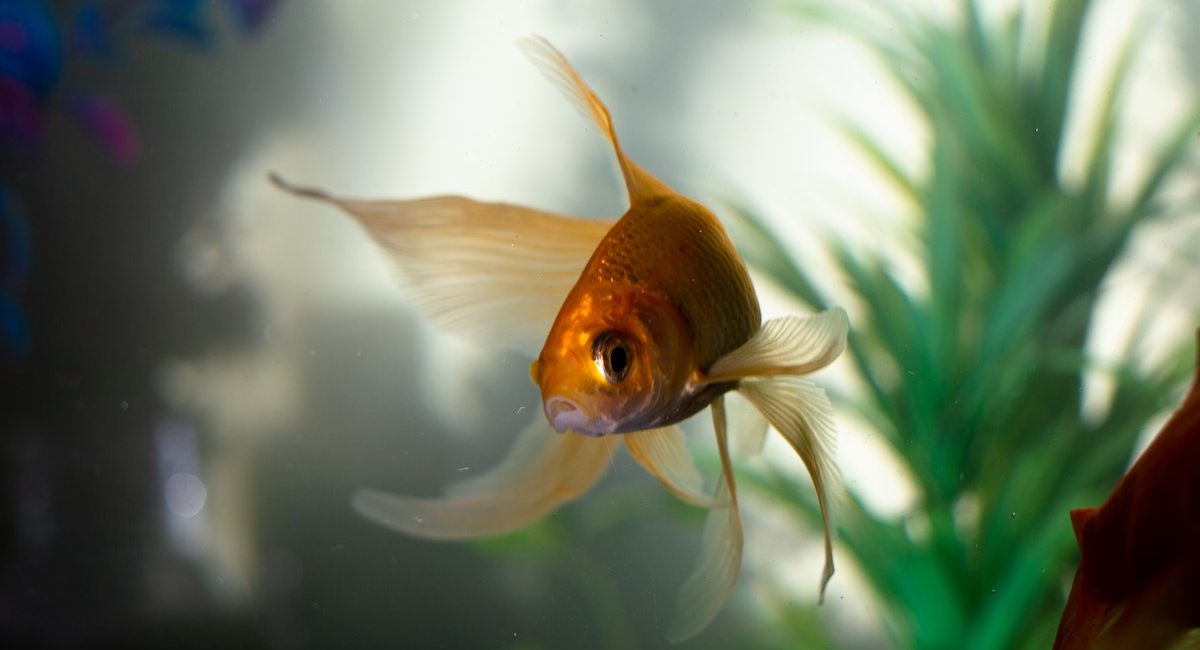Fresh Water Fishes & Aquariums: Basics You Need to Know
Fresh Water Fishes & Aquariums: Are you considering setting up a freshwater aquarium in your home or office? Freshwater aquariums are a great way to add some life and color to any space. In this article, we will provide you with everything you need to know about freshwater fishes and aquariums.
Introduction
Freshwater aquariums have become increasingly popular over the years. They provide a relaxing and visually appealing addition to any home or office. However, setting up an aquarium and choosing the right freshwater fish can be overwhelming for beginners. In this guide, we will cover everything you need to know about freshwater fishes and aquariums, from setting up your tank to choosing the right fish and maintaining a healthy environment.
Types of Freshwater Fishes – Fresh Water Fishes & Aquariums
Before setting up a freshwater aquarium, it’s essential to know the different types of freshwater fishes available. Here are some of the most popular types of freshwater fishes:
- Guppies – these are small, colorful fishes that are easy to care for and perfect for beginners.
- Tetras – these are small, active fishes that come in a variety of colors. They are peaceful and easy to care for.
- Angelfish – these are beautiful, graceful fishes that are popular for their unique shape and color patterns.
- Bettas – these are small, colorful fishes that are known for their aggressive behavior. They require specific care, but they are popular due to their unique appearance.
- Discus – these are elegant, disk-shaped fishes that require specific care but are a popular choice for experienced aquarium enthusiasts.
- Gouramis – these are peaceful, easy-to-care-for fishes that come in a variety of colors and patterns.
- Goldfish – these are popular, hardy fishes that are available in many different colors and sizes.
- Catfish – these are bottom-dwelling fishes that help keep the aquarium clean by feeding on leftover food and debris.
It’s important to note that different types of fishes have different requirements for water temperature, pH level, and tank size. Make sure to research and choose the appropriate fishes for your freshwater aquarium.
Setting Up Your Freshwater Aquarium
Now that you know the different types of freshwater fishes available, it’s time to set up your aquarium. Here are the steps you need to follow:
- Choose the Right Aquarium The first step is to choose the right aquarium for your fishes. Consider the size, shape, and material of the tank. Aquariums come in various sizes, ranging from small tabletop tanks to large floor-standing tanks. For beginners, it’s best to start with a small to medium-sized tank. Glass aquariums are the most common and are relatively affordable, while acrylic tanks are more expensive but are lighter and more durable.
- Select the Right Equipment You’ll need some essential equipment to set up your freshwater aquarium, including a filter, heater, thermometer, substrate, and lighting. The filter helps keep the water clean by removing debris and harmful chemicals, while the heater ensures that the water temperature is suitable for your fishes. The substrate is the material that covers the bottom of the tank, and it helps with biological filtration. The lighting is necessary for the growth of live plants.
- Add Decorations and Plants Decorations and plants can enhance the appearance of your freshwater aquarium, making it look more natural and attractive. Rocks, driftwood, and artificial or live plants are popular choices for aquarium decorations. Live plants provide additional benefits by helping to maintain water quality and oxygenating the water.
- Fill the Tank with Water Once you’ve added your substrate, decorations, and plants, it’s time to fill the tank with water. Tap water can be used, but it’s essential to treat it with a water conditioner to remove chlorine and other harmful chemicals.
- Cycle the Tank Cycling the tank means establishing a beneficial bacteria colony in the aquarium that helps maintain water quality. You can cycle the tank by adding a small number of hardy fishes, allowing their waste to produce ammonia, which is then converted into nitrite and nitrate by the beneficial bacteria. Alternatively, you can cycle the tank without fishes by adding ammonia directly and monitoring the levels until the beneficial bacteria are established.
- Add Your Fishes Once the tank is cycled, you can add your fishes. Start with a small number of fishes and gradually increase the population over time. Remember to choose fishes that are compatible with each other and have similar requirements for water temperature and pH level.
- Maintain Your Aquarium To keep your freshwater aquarium healthy, you need to maintain it regularly. This includes cleaning the tank, changing the water regularly, testing the water parameters, and feeding your fishes appropriately. Follow a regular maintenance schedule to ensure that your fishes thrive and your aquarium remains beautiful and healthy.
Number of Fish
It is important not to overcrowd your aquarium. Overcrowding can lead to stress and disease among your fish. As a general rule of thumb, you should have no more than one inch of fish per gallon of water.
Creating a Balanced Environment
In order for your fish to thrive, it is important to create a balanced environment in your aquarium. This means providing the right amount of light, temperature, and oxygen. You should also consider adding live plants and decorations to provide hiding places for your fish.
Caring for Your Freshwater Fishes
Caring for your freshwater fishes is essential to keep them healthy and happy. Here are some tips to help you take care of your fishes:
- Feed Your Fishes Properly Proper nutrition is crucial for the health of your fishes. Feed them a balanced diet of commercial fish food that meets their nutritional requirements. Overfeeding can lead to health problems and pollute the aquarium water, so feed your fishes in moderation.
- Maintain Good Water Quality The quality of the aquarium water is critical to the health of your fishes. Regular water changes, cleaning the tank, and using a good filtration system can help maintain good water quality. Test the water regularly for ammonia, nitrite, nitrate, and pH levels to ensure that they are within the acceptable range for your fishes.
- Monitor the Water Temperature The water temperature should be maintained within the appropriate range for your fishes. A thermometer can help you monitor the temperature and adjust the heater if necessary. Sudden changes in temperature can stress the fishes, so avoid drastic temperature fluctuations.
- Provide Adequate Space Overcrowding can lead to stress, aggression, and health problems in your fishes. Ensure that your fishes have adequate space to swim and move around. The general rule of thumb is to allow one inch of fish per gallon of water, but it’s best to research the specific requirements of your fishes to determine the appropriate stocking level.
- Observe Your Fishes Regularly Observing your fishes regularly can help you detect any signs of illness or stress. Look for changes in behavior, such as lethargy, loss of appetite, or abnormal swimming patterns. If you notice any changes, take immediate action to address the issue.
- Perform Regular Maintenance Regular maintenance of your aquarium is essential to keep it healthy and beautiful. This includes cleaning the tank, replacing the filter media, and trimming the plants. Develop a regular maintenance schedule and stick to it to ensure that your fishes thrive in a clean and healthy environment.
By following these tips, you can ensure that your freshwater fishes remain healthy and happy in your aquarium. Remember to provide them with proper nutrition, maintain good water quality, monitor the water temperature, provide adequate space, observe them regularly, and perform regular maintenance.
Maintaining Your Aquarium – Fresh Water Fishes & Aquariums
Cleaning and Maintenance
Regular cleaning and maintenance are essential for keeping your aquarium healthy. This includes regular water changes, filter cleaning, and substrate cleaning. You should also monitor the pH level and temperature of the water to ensure it stays within the appropriate range.
Feeding Your Fish
Feeding your fish is an important part of their care. Different species of fish have different dietary requirements, so it is important to research the specific needs of your fish. It is also important not to overfeed your fish, as this can lead to health problems and poor water quality.
Common Freshwater Fish Diseases – Fresh Water Fishes & Aquariums
Unfortunately, just like any living creature, freshwater fishes are susceptible to diseases. Here are some of the most common diseases that can affect your freshwater fishes:
- Ich Ich, also known as white spot disease, is caused by a parasite that attacks the fish’s skin and gills. Symptoms include white spots on the fish’s body, clamped fins, and increased respiratory rate. Treatment involves raising the temperature of the water and administering medication.
- Fin Rot Fin rot is a bacterial infection that affects the fins of the fish. It can be caused by poor water quality, overcrowding, and stress. Symptoms include ragged or frayed fins, discoloration, and fin loss. Treatment involves improving water quality, administering medication, and removing any affected fins.
- Dropsy Dropsy is a bacterial infection that affects the fish’s internal organs, causing fluid buildup and swelling. It can be caused by poor water quality, stress, and other underlying health issues. Symptoms include bloating, protruding scales, and lethargy. Treatment involves improving water quality, administering medication, and isolating the affected fish.
- Velvet Velvet is caused by a parasitic organism that attacks the fish’s skin and gills. Symptoms include a yellow or gold dust-like appearance on the fish’s body, rapid breathing, and lethargy. Treatment involves raising the temperature of the water and administering medication.
- Swim Bladder Disorder Swim bladder disorder is a condition that affects the fish’s ability to control its buoyancy. It can be caused by overfeeding, poor water quality, and other underlying health issues. Symptoms include floating to the top or sinking to the bottom of the tank, difficulty swimming, and loss of appetite. Treatment involves improving water quality, adjusting the fish’s diet, and isolating the affected fish.
- Columnaris Columnaris is a bacterial infection that affects the fish’s skin, fins, and internal organs. It can be caused by poor water quality, overcrowding, and stress. Symptoms include white or gray patches on the fish’s body, frayed fins, and loss of appetite. Treatment involves improving water quality, administering medication, and isolating the affected fish.
By being aware of the signs and symptoms of common freshwater fish diseases, you can take action to address them early and prevent further spread. Remember to maintain good water quality, avoid overcrowding, and observe your fishes regularly for any signs of illness or stress. If you notice any changes, take immediate action to address the issue and consult with a veterinarian or aquarium expert if necessary.
Popular Freshwater Aquarium Plants – Fresh Water Fishes & Aquariums
Adding plants to your freshwater aquarium not only adds aesthetic value but also provides a natural habitat for your fish. Here are some of the most popular freshwater aquarium plants:
- Java Moss Java moss is a hardy plant that is easy to care for and can be attached to rocks, driftwood, or other aquarium decorations. It provides a hiding place for small fish and helps to remove toxins from the water.
- Amazon Sword The Amazon Sword is a popular plant for larger aquariums as it can grow up to 20 inches tall. It provides a natural hiding place for fish and can help to oxygenate the water.
- Anubias Anubias is a slow-growing plant that is best attached to driftwood or rocks. It provides a natural hiding place for fish and can help to improve water quality by removing toxins.
- Java Fern Java Fern is a low maintenance plant that can grow in a variety of lighting conditions. It provides a natural habitat for fish and can help to improve water quality.
- Water Wisteria Water Wisteria is a fast-growing plant that can be used to provide cover for breeding fish. It also helps to remove excess nutrients from the water and provides oxygen.
- Hornwort Hornwort is a floating plant that can help to remove toxins from the water and provide a natural habitat for fry and shrimp.
When selecting plants for your freshwater aquarium, it is important to consider their lighting requirements, growth rate, and compatibility with your fish. Make sure to provide adequate lighting and nutrients for your plants to thrive, and prune them regularly to prevent overcrowding. With the right care, freshwater aquarium plants can provide a natural and beautiful environment for your fish to thrive.
Adding Decorations to Your Aquarium – Fresh Water Fishes & Aquariums
Adding decorations to your freshwater aquarium is not only a fun way to personalize your tank, but it can also provide hiding places and shelter for your fish. Here are some popular types of decorations that you can consider adding to your aquarium:
- Rocks and Driftwood Rocks and driftwood can provide a natural-looking environment for your fish. They can also provide hiding places and shelter for your fish. When adding rocks and driftwood to your aquarium, make sure to clean them thoroughly and avoid using ones that could leach harmful chemicals into the water.
- Caves and Tunnels Caves and tunnels can provide hiding places for your fish, which can help them feel safe and secure. You can buy pre-made caves and tunnels or create your own using PVC pipes or other materials.
- Plants Plants not only provide natural beauty to your aquarium, but they also provide hiding places and shelter for your fish. You can choose between live or artificial plants, depending on your preference and experience level.
- Ornaments Ornaments can add personality and style to your aquarium. From pirate ships to ancient ruins, there are a variety of ornaments to choose from that can provide a fun and interesting environment for your fish.
When adding decorations to your aquarium, it is important to make sure they are safe for your fish and won’t harm the water quality. Avoid using decorations that could leach harmful chemicals into the water, such as painted or dyed objects. Also, make sure to clean your decorations before adding them to your tank to avoid introducing unwanted bacteria or pollutants.
With the right decorations, your freshwater aquarium can be a beautiful and personalized environment for your fish to thrive.
Common Filteration Systems – Fresh Water Fishes & Aquariums
Proper filtration is essential for maintaining a healthy freshwater aquarium. It helps to remove waste, toxins, and other impurities from the water, creating a clean and healthy environment for your fish to thrive. There are several types of filtration systems available, ranging from simple to complex. Here are some of the most common and complex filtration systems for freshwater aquariums:
- Mechanical Filters Mechanical filters use a physical medium, such as a sponge or filter pad, to trap debris and waste particles. They are easy to install and maintain, making them a popular choice for beginners.
- Biological Filters Biological filters use bacteria to break down organic waste and toxins in the water. They are an essential component of any aquarium filtration system and can be incorporated into mechanical or chemical filters.
- Chemical Filters Chemical filters use activated carbon or other materials to remove impurities and odors from the water. They are useful for removing medications or other chemicals from the water but should be used sparingly.
- Canister Filters Canister filters are a more complex filtration system that uses multiple filtration stages to provide comprehensive water filtration. They are highly effective at removing impurities and can be customized to meet the specific needs of your aquarium.
- Sump Filters Sump filters are a highly customizable filtration system that uses a separate tank or reservoir to house the filtration media. They are highly effective at removing impurities and can be adapted to accommodate different types of filtration media.
When selecting a filtration system for your freshwater aquarium, it is important to consider the size of your tank, the number and type of fish you have, and the specific needs of your aquarium. A properly selected and maintained filtration system will help to ensure a healthy and thriving aquatic environment for your fish.
Conclusion – Fresh Water Fishes & Aquariums
Setting up a freshwater aquarium can be a rewarding and enjoyable experience. By choosing the right tank size, filter, substrate, and fish, and maintaining a healthy environment, you can create a beautiful and thriving aquarium in your home or office.
FAQs – Fresh Water Fishes & Aquariums
- How often should I clean my aquarium?
You should clean your aquarium at least once a week, or more frequently if necessary.
- What is the ideal pH level for a freshwater aquarium?
The ideal pH level for a freshwater aquarium is between 6.5 and 7.5.
- Can I keep different species of freshwater fish in the same tank?
Yes, but it is important to research the species of fish and ensure they are compatible with each other and the environment in your tank.
- How often should I feed my freshwater fish?
The frequency of feeding will depend on the species of fish you have. As a general rule of thumb, you should feed your fish once or twice a day, only giving them as much food as they can eat in 2-3 minutes.
- What can I do if my aquarium water becomes cloudy?
Cloudy water can be a sign of poor water quality. You can try changing the water, cleaning the filter, and reducing the amount of food you give your fish. If the problem persists, it may be a sign of a more serious issue and you should consult with an aquarium specialist.
Photo by imsogabriel Stock




Leave a Comment